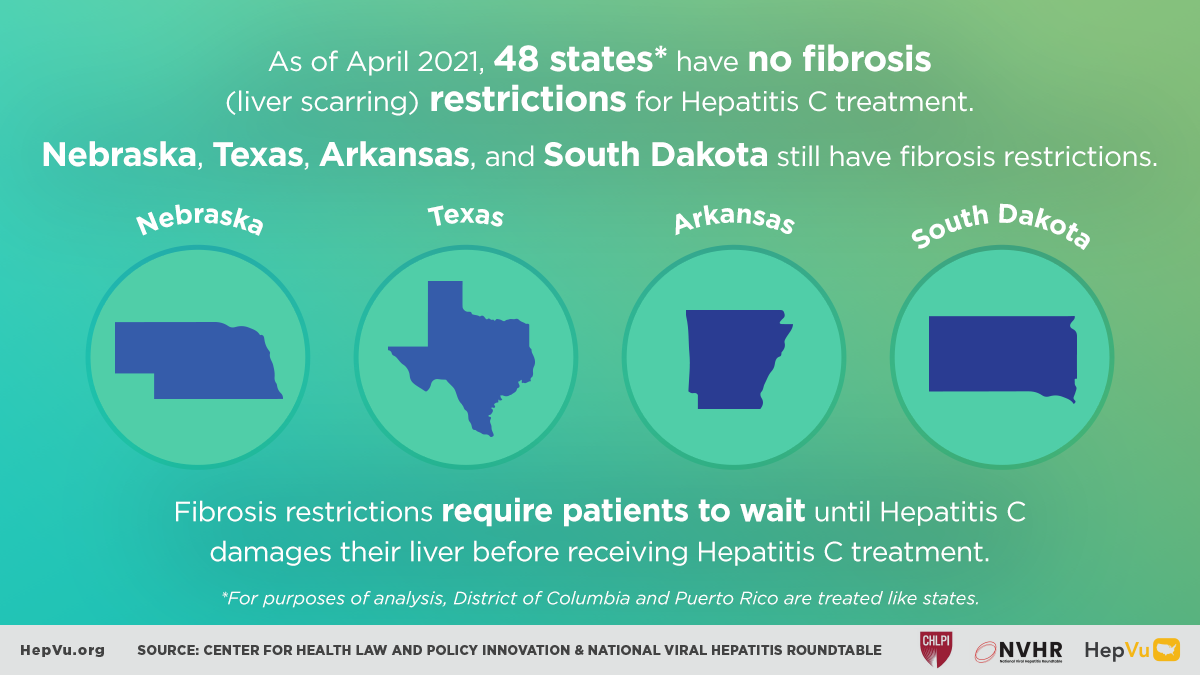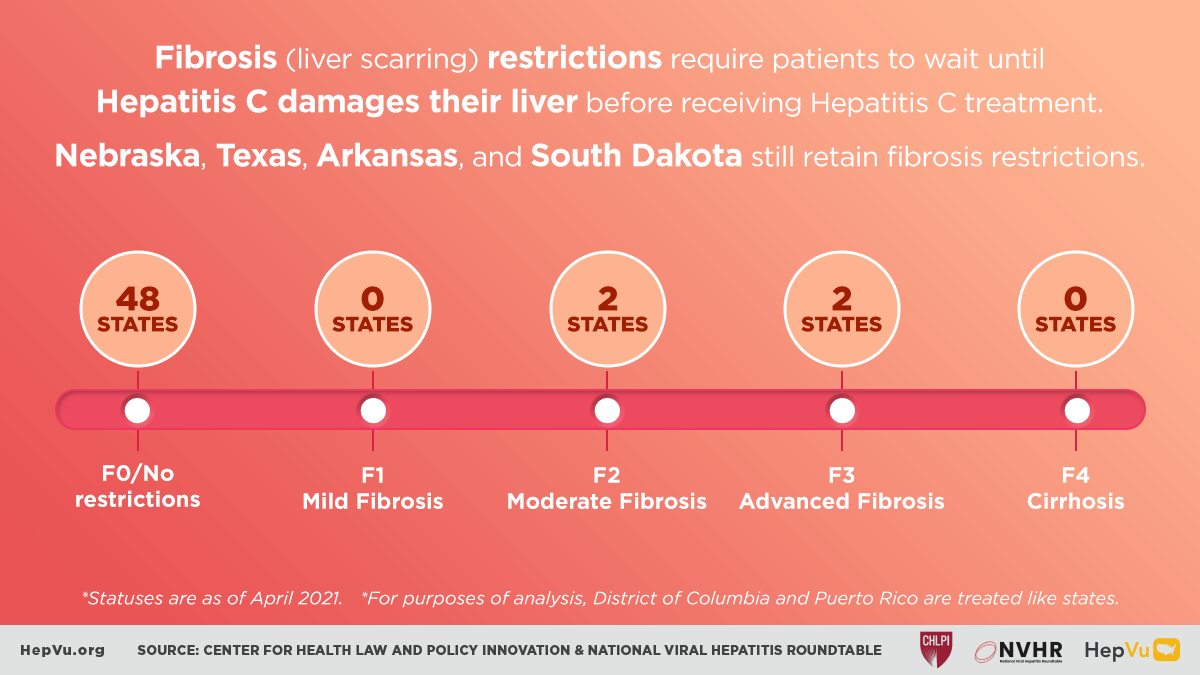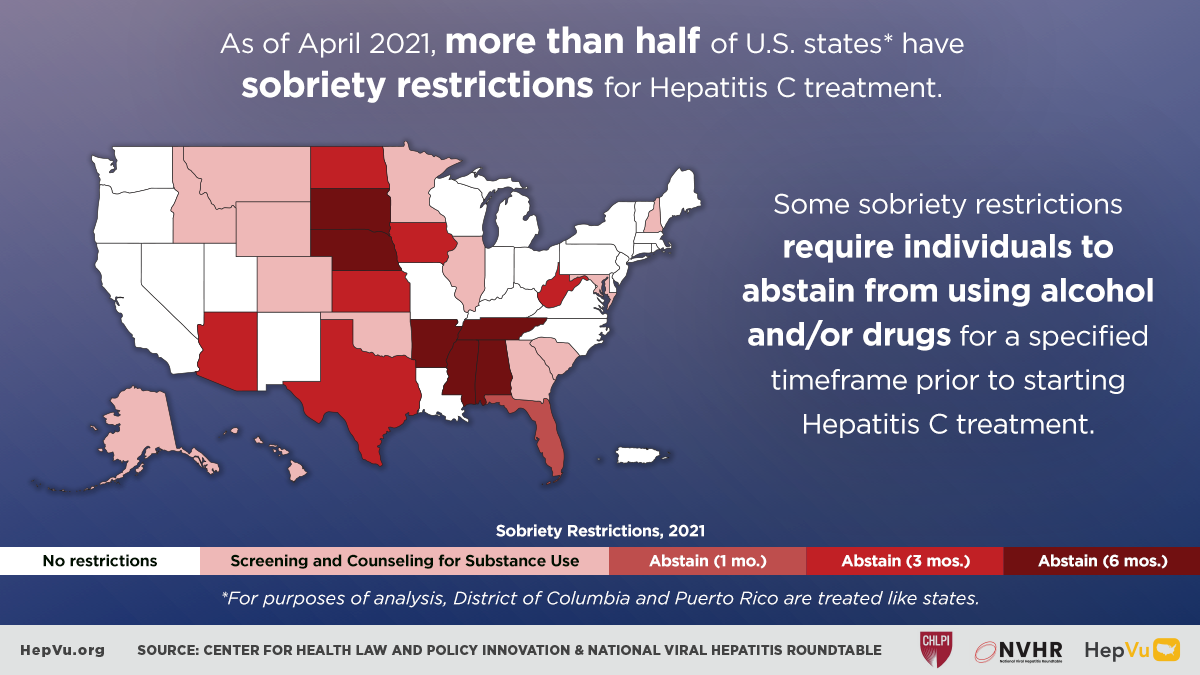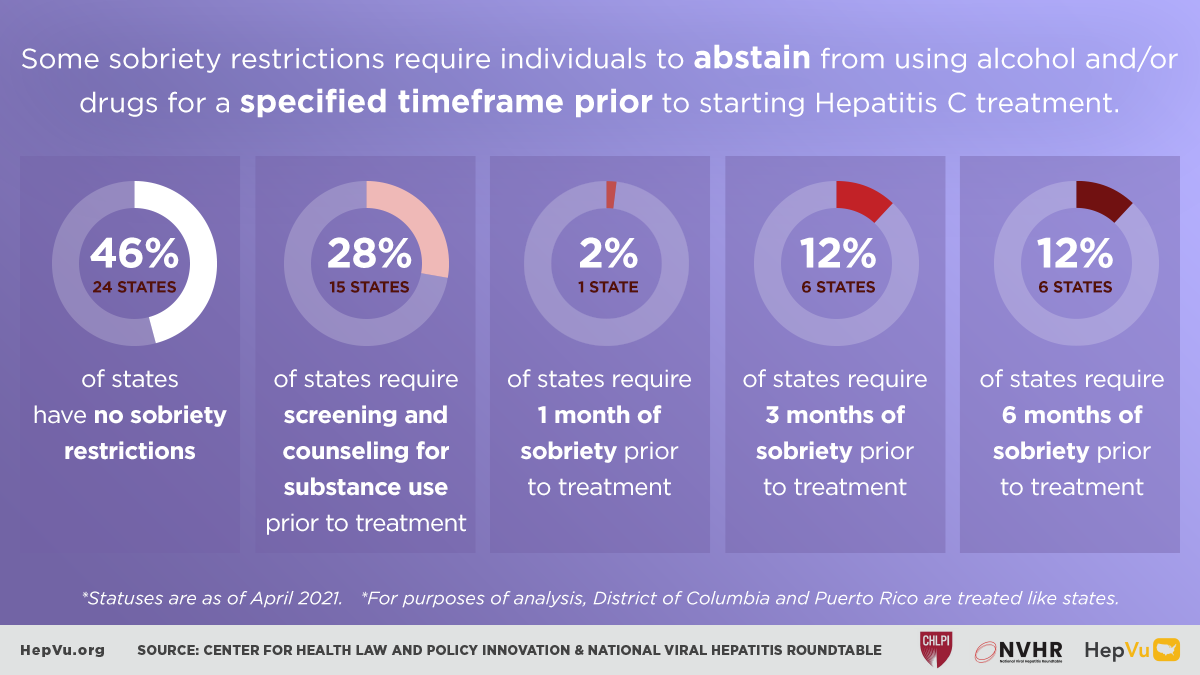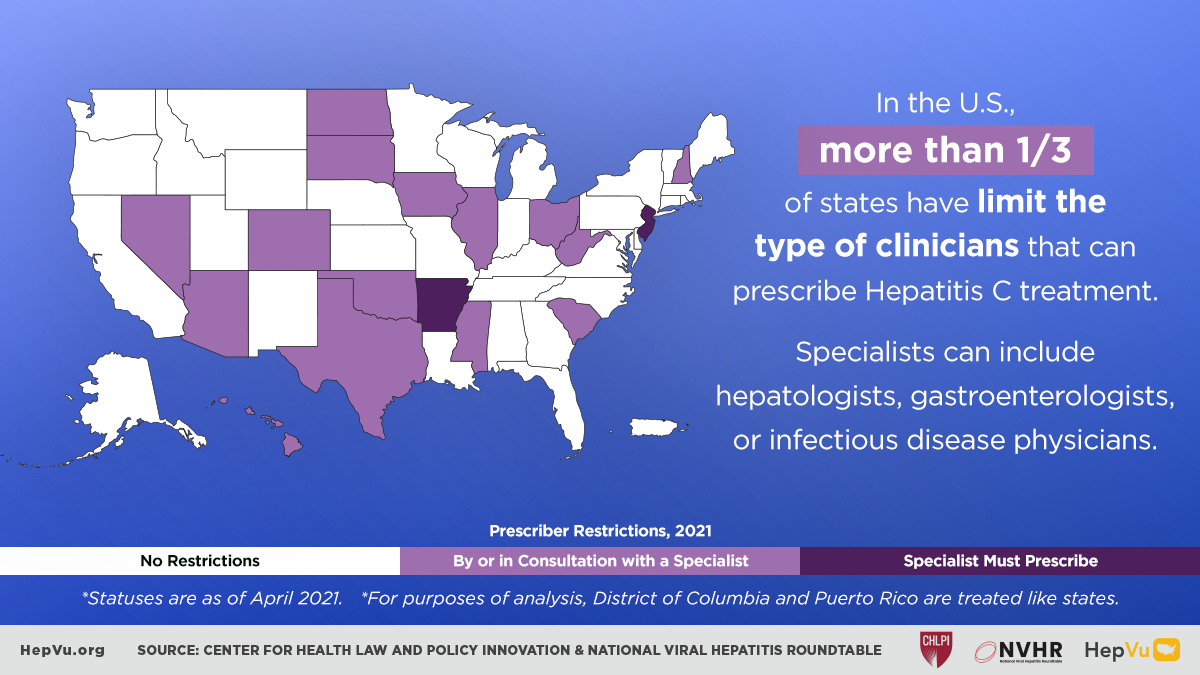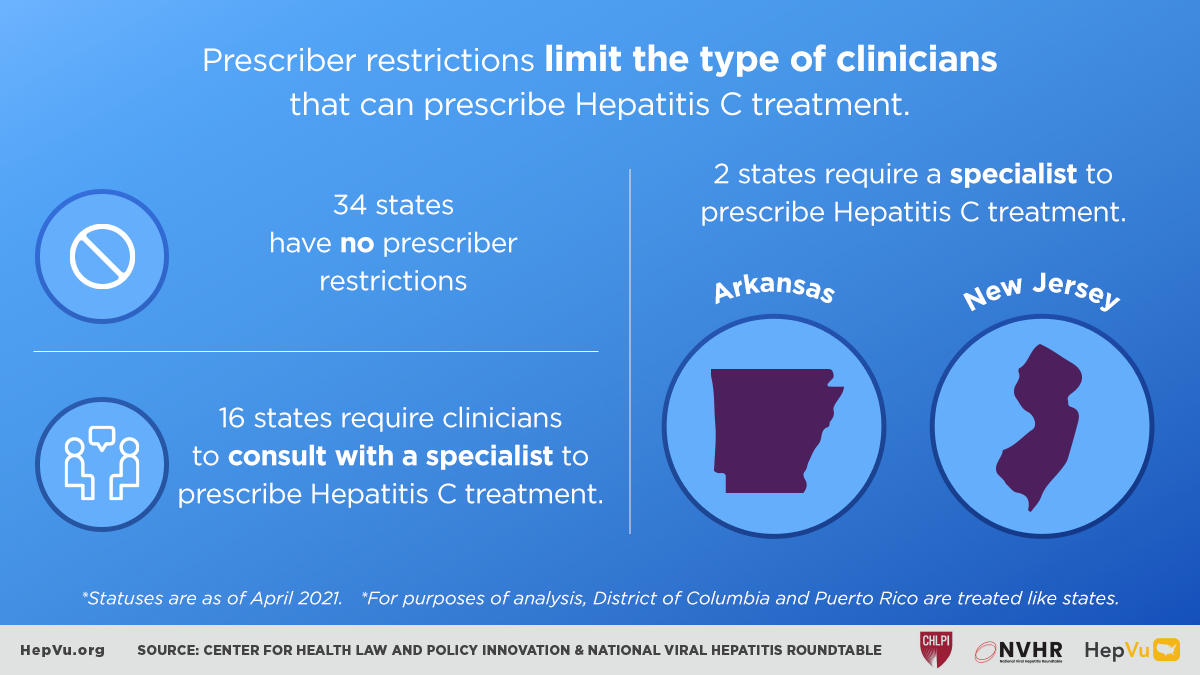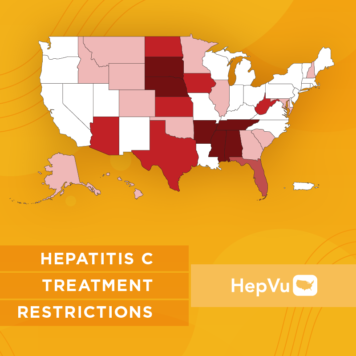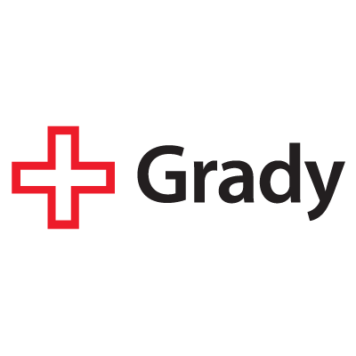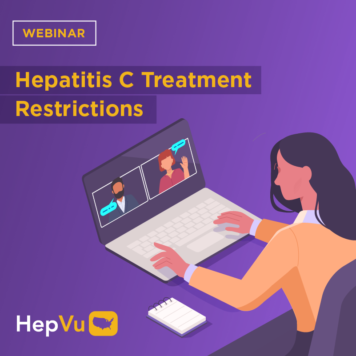
Today, HepVu added new data and comparison maps visualizing Hepatitis C treatment restrictions at the state-level from 2017 to 2021, utilizing insights from the Center for Health Law and Policy Innovation (CHLPI) at Harvard Law School and the National Viral Hepatitis Roundtable (NVHR)’s Hepatitis C: The State of Medicaid Access report. HepVu also enhanced its state profiles to feature each state’s Hepatitis C treatment restrictions.
Treatment restrictions are non-medically indicated restrictions limiting access to treatment. When highly effective and curative direct-acting antivirals (DAAs) were introduced to treat Hepatitis C nearly a decade ago, many state Medicaid programs created restrictions for patients to access the new medications as a cost-saving measure. These treatment restrictions create barriers to life-saving treatment and perpetuate stigma, especially for people with substance use disorders – and do not serve the interests of the state or the patients.
There are three major types of Hepatitis C treatment restrictions associated with receiving care through state Medicaid programs:
- Fibrosis Level Treatment Restrictions – Fibrosis is scarring of the liver, which severely deteriorates the organ. Fibrosis restrictions require patients to wait until Hepatitis C severely damages their liver to a certain level before receiving treatment. Fibrosis is measured on a scale from 0 to 4, with 4 indicating liver failure or cirrhosis.
- Sobriety Treatment Restrictions – These restrictions require patients to abstain from using alcohol and/or drugs for a specific timeframe before starting Hepatitis C treatment, or to complete screening and counseling before treatment. The period of required sobriety can range from one to six months before treatment.
- Prescriber Treatment Restrictions – These restrictions limit the type of clinicians that can prescribe Hepatitis C treatment. States with prescriber restrictions require a consultation with a specialist, such as a hepatologist, or that a specialist directly prescribes treatment, which can hinder treatment in areas with few Hepatitis C specialists.
The U.S. has made tremendous progress in eliminating or scaling back these treatment restrictions since tracking began in 2017. Due to the continued and diligent work of viral hepatitis organizations such as CHLPI and NVHR:
- 32 states have eliminated or reduced fibrosis restrictions, 4 states still have this restriction.
- 21 states have loosened sobriety restrictions, 28 states have maintained rigid restrictions.
- 25 states have scaled back prescriber restrictions, 18 states have maintained rigid restrictions.
Legal and community advocates continue to work towards eliminating barriers to care and increasing access to Hepatitis C treatment, especially for medically underserved populations such as communities of color and people who inject drugs. To get involved and help advocate to eliminate these treatment restrictions, explore NVHR’s resources.
In addition to the new treatment restrictions maps, HepVu has updated opioid prescription, pain reliever misuse, and overdose mortality maps to the latest available data (2019). For more information on the data source and limitations, see our Data Methods.
To learn more about Hepatitis C treatment restrictions, explore HepVu’s resources:
- Visualize the current landscape of Hepatitis C treatment restrictions at the state-level with HepVu’s interactive maps.
- Explore our local data profiles to learn about Hepatitis C treatment restrictions in your state.
- Read expert-led Q&As on Hepatitis C treatment restrictions:
- Find available viral hepatitis testing and care services near you with HepVu’s service locators.
- Share our infographics with your networks to raise awareness.


